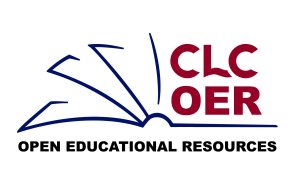4 Open Education at Central Lakes College

At Central Lakes College, we have a history of working in the open education movement since 2015. We began OER work in 2015 during an in-service day, building awareness of what open educational resources are, and how high textbook costs affect our students. We received our first OER grants from MinnState in 2015. We created the first Z-Degree in MN in 2018. Our Printshop, Bookstore, Z-degrees, Student OER Specialists, and active OER Steering Committee make us leaders within Minnesota in Open Education. More than a third of our faculty have participated in the OER Learning Circles, the CIS OER Learning Circles, or the OER Community of Practice.
In 2021, we identified our Mission and developed a Mission Statement, a Vision Statement, and a Values Statement.
Mission
To inspire faculty and students to become users and creators within the open education movement.
Vision Statement
Imagine a world where all CLC students have equal access to quality open educational materials.
Values Statement
Committed to openness, equity, and excellence.
Mission Statement
Since research demonstrates open education practices foster inclusivity, increased learning, retention, and completion, the mission of the OER Committee is to further our open education initiatives by training and supporting faculty in the adoption, adaptation, and creation of OER for their courses. Additionally, the OER Committee will secure and distribute funding for faculty to implement open education practices and sustain our current OER materials and pedagogy.
Below, are examples of the application to the OER Community of Practice. Each year, CLC offers stipends and support to a group of 6-10 faculty who would like to convert their courses to OER. They might adopt an OER, adapt an OER, or create an OER. They meet about once a month to share progress and learn about various aspects of open education practices that support their work. At the end of the year, they publish their adaptations or creations on Opendora, the MinnState OER Repository.
Example
Open Educational Resources Development Application
| Name: |
| Title and Number of Course you wish to develop: |
Redesign a CLC Course a course to replace a commercial textbook with OER
|
| How frequently is the course offered? |
| What is the approximate annual enrollment of each section of the course? |
| What textbook materials are currently used in each course, including their ISBN, title, author, edition, and current bookstore cost? |
| I will publish my OER on Opendora. https://opendora.minnstate.edu/ |
| Signature: Date: |
Example
Minnesota State Open Educational Resource (OER) Agreement
- Project: Minnesota State Open Education Resource (OER) Grant.
This PROJECT provides funding to college and university faculty for development of OER materials such as Textbooks, Courses, D2L Course Shells, and Learning Objects (hereinafter MATERIALS). A participating Minnesota State faculty member (hereinafter AUTHOR) will be compensated to create Creative Commons (CC) licensed MATERIALS. Faculty members retain the copyright to the MATERIALS.
- Compensation
College or University shall pay the agreed upon compensation of $1500 to AUTHOR (individual or multiple) for the development and CC licensing of the MATERIALS.
- Author’s Responsibility
The faculty member agrees to develop the MATERIALS, make them available through one of the following Creative Commons licenses: (1.) Creative Commons Attribution (CC BY), (2.) Creative Commons Attribution–ShareAlike (CC BY-SA), (3.) Creative Commons Attribution-NonCommercial (CC BY-NC), or (4.) Creative Commons Attribution-NonCommercial-ShareAlike (CC BY-NC-SA), and upload the MATERIALS to the platform provided by the System Office.
- Identify MATERIALS to be created by AUTHOR:
- Creative Commons License
The CC license allows others to use, remix, modify, and build upon your work, as long as they comply with the terms of the CC license, such as paying attribution to the author in a CC BY license. The CC license selection tool is available at www.creativecommons.org/choose/ to help an author choose the appropriate CC license.
- Attribution to AUTHOR
o Identify faculty member by name as author/co-author of the MATERIALS.
o Use MATERIALS anonymously
Faculty member will identify the attribution statement to be used, if box one is selected.
Ex. Made available by Prof. Jane Doe, Inver Hills Community College, though a CC BY-NC license.
- Certification of Authorship
The copyright to the MATERIALS has been cleared pursuant to System Procedure 3.27.1 Copyright Clearance. The MATERIALS identified above are not subject to any restriction that would prevent their use in the PROJECT.
